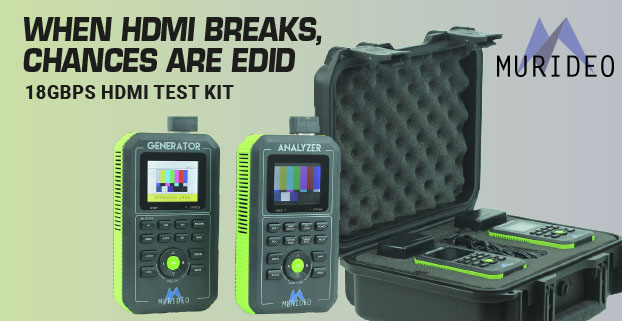An estimated 80% of all HDMI errors stem from EDID issues. To make matters worse, the equipment might work, but not work properly.
EDID is generated by your TV, monitor, projector to tell the source its capabilities. So a one-way piece of information saying stuff like, “I’m a Panasonic & I’m happy with the following resolutions”. One big issue is that EDID is designed to ensure a picture is produced. That picture may not be what you want. If the cabling is poor, maybe it’ll auto scale down the resolution to account for this. Maybe it’ll drop HDR. The priority of EDID is to ensure that at a minimum, a picture and sound is produced. As a professional, you’re paid to deliver the full capabilities of the equipment, so EDID management is essential.
So we now understand that EDID management is essential and that EDID has a tendency to drop things like HDR & 4K resolutions. As repeaters like AVRs, matrix switchers, splitters & extenders are introduced, it’s likely that your TV isn’t performing to its full potential. This means that often each link in the chain must be checked and must perform. So, if you get the latest & greatest TV, you should ideally ensure that your AVR also supports everything like 4K, HDCP2.2 and full bandwidth (18GBPS). You should also look at upgrading HDMI cable & splitters as these will also need to support 18 GBPS bandwidth. So when introducing a new TV, consider upgrading all the links in the AV chain at the same time.
If you’re a professional, the Fox and Hound is indispensable for overcoming EDID issues. You put the Generator on one side of the HDMI switch and the Analyser on the other side. If the full signal passes through the splitter, you know that you’re good to go. No EDID issues. If it doesn’t work, try manually changing the EDID setting on the HDMI switch. This is the best guarantee that your equipment will work to its maximum potential.
By Michael Swann
This write-up first appeared in our March 2018 newsletter.
